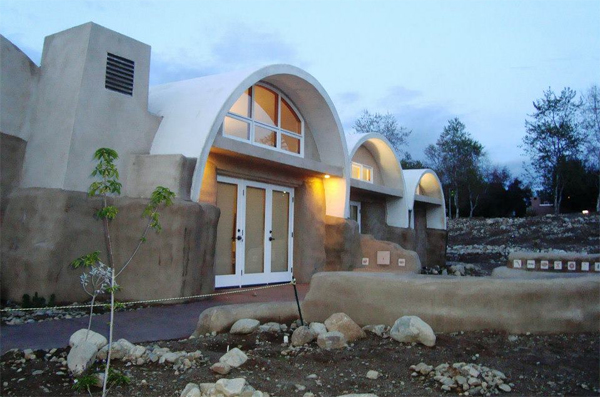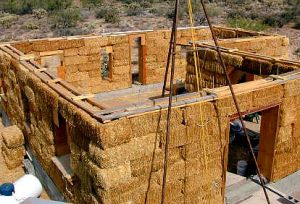EQ
Answer #2: An important factor to consider when designing a green structure are the materials that will be used for the construction of the structure.
The whole idea of being green does not mean just saving energy when the building is complete, it also means that energy has to be saved when the structure is being built.
1). By using materials that are on site there is no need for gasoline to be wasted on transportation of materials to the site of the construction. For example, a new and great idea is building with the dirt that is found on the site, this will reduce the energy and time lost because all the essential building materials will be at the builder's disposal.
2). Building with materials that are "cut to the job" can help save money and materials that may not be able to be used other places. One example of this is if you have a piece of wood that is 6"x 60" but the only available pieces of wood are 6"x 75". This would mean that out of every piece of wood 15" is being lost and being thrown away because it was not cut specifically for the job.
3). Using green materials can also help with money and savings over time. For example, a "green" type of insulation may be cheaper as well as more efficient at its job than regular insulation.
That is why materials are a significant factor when designing a green structure.
Wednesday, February 26, 2014
Wednesday, February 12, 2014
Independent Component 2 Approval
1. Describe in detail what you plan to do for your 30 hours.
3. And explain how what you will be doing will help you explore your topic in more depth.
4. Post a log on the right hand side of your blog near your other logs and call it the independent component 2 log.
- For the 30 hours I plan on studying the blueprint for sustainable buildings and the benefits as well as the flaws. Hopefully this will give me more possible answers for the near future.
- I will volunteer with my mentor Erik Peterson.
3. And explain how what you will be doing will help you explore your topic in more depth.
- This will give my topic more depth because it can lead to possible answers.
4. Post a log on the right hand side of your blog near your other logs and call it the independent component 2 log.
Thursday, February 6, 2014
Independent Component 1
- LITERAL
(a) “I, Bryan Uribe, affirm that I completed my independent component which represents 30 hours of work.”
(b) I completed my 30 hours with my mentor Erik Peterson
(c) Log of 30 hours. - (d) Since my mentor was moving from the building that he was working, I was unable to really do any real research work with him but the conversations that we had the the research that he provided and helped me achieve made up for the lack of work. Since I was getting more time with research I decided to do my independent component on an essay or a breakdown on some of the sustainable buildings that my mentor, Erik Peterson, had showed me.
- INTERPRETIVE
 |
| This was a superadobe building that Erik Peterson deisgned and that he gave me a tour of. The concept of building with the dirt on-site is a new yet efficient idea. |
 |
| Here is how the structure looked during construction. Each bag is full of the on-site dirt. |
 |
| This was the Western Christian School located in Claremont. It may seem like any other building but in fact it is extremely unique. |
- APPLIED The component helped me better understand the foundation of my topic by allowing me to connect the actual building with the blueprints that I had organized and asked questions about. Two specific examples of were of the Bridges Hall of Music for Pomona College in Claremont and The Super Adobe Building for Uncommon Good in Claremont. I was finally able to see how the blueprints corresponded to the final building. Erik Peterson also gave me tours of many of the buildings and explained the benefits and some of the flaws behind many of the different types of sustainable designing.
Subscribe to:
Posts (Atom)
